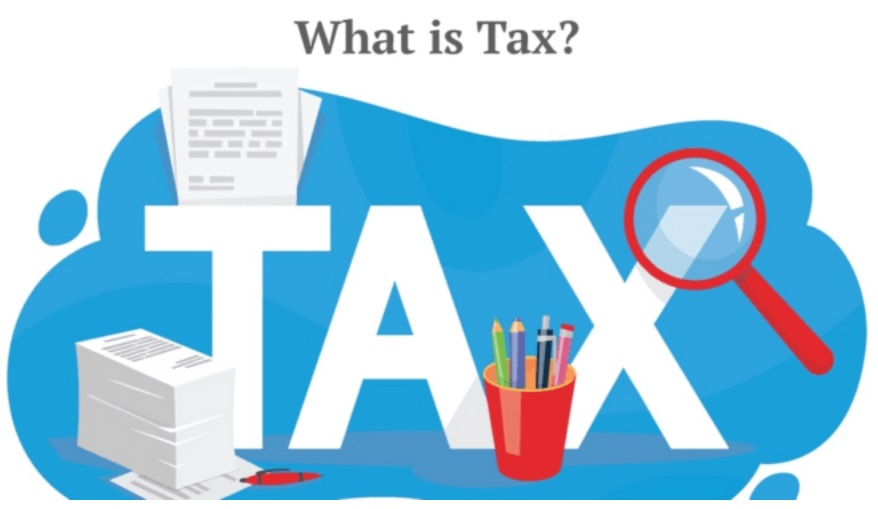Taxation in India represents one of the fundamental pillars sustaining the country’s economy. It is a financial charge or levy imposed by the government on individuals, corporations, or other entities based on their income, wealth, or transactions. Taxes collected from citizens enable the government to fund critical expenditures, including infrastructure, public welfare schemes, healthcare, education, and defense.
For new taxpayers in India, understanding the nuances of taxation is essential, as it directly impacts their financial planning and decision-making. This article will explain “what is taxation” and shed light on key concepts, including one of the critical aspects—Tax Deducted at Source (TDS)—with special focus on TDS on FD (Fixed Deposit) interest to help individuals navigate this landscape effectively.
What is Taxation?
Taxation is the process by which the government collects financial contributions from taxpayers. In India, it primarily falls under two broad categories: direct tax and indirect tax.
1. Direct Tax:
Direct taxes are levied directly on an individual’s or entity’s income or revenue. Examples include:
– Income Tax: Tax on earnings from salaries, business profits, capital gains, or other sources.
– Corporate Tax: Tax paid by companies on their net profits.
2. Indirect Tax:
Indirect taxes are imposed on goods and services and are collected indirectly via intermediaries such as sellers or service providers. The tax burden ultimately falls on the consumer. Examples include:
– Goods and Services Tax (GST): A unified tax on the supply of goods and services.
– Customs Duty: Tax levied on imported goods.
These taxes are governed by various laws and regulations, such as the Income Tax Act, 1961, and are administered by the Central Board of Direct Taxes (CBDT) and the Central Board of Indirect Taxes and Customs (CBIC).
Key Taxation Terms for New Taxpayers
For first-time taxpayers, understanding common terms related to taxation is essential for compliance. Here are some key concepts:
1. Income Tax Slabs:
India follows a progressive tax system where individuals are taxed based on predefined income slabs. For instance, as of FY 2023-24, individuals earning below ₹2,50,000 annually are exempt from paying taxes, while those earning above this threshold are taxed progressively (e.g., 5%, 10%, 15%, 20%, and 30%).
2. Eligible Deductions:
Taxpayers can lower their taxable income by claiming deductions under various sections of the Income Tax Act, such as:
– Section 80C: Investments in instruments like Public Provident Fund (PPF), Employees’ Provident Fund (EPF), life insurance premiums, and more.
– Section 80D: Premiums paid for health insurance policies.
3. PAN Card:
A Permanent Account Number (PAN) is mandatory for tracking all financial transactions, filing income tax returns (ITR), and complying with taxation requirements.
4. Filing ITR:
Filing your Income Tax Return is a legal obligation and enables you to declare, calculate, and pay taxes annually. Penalties may apply for failing to file returns on time.
TDS on FD Interest
Tax Deducted at Source (TDS) is a means of collecting taxes from the source of income itself. Banks and financial institutions in India deduct TDS on FD interest earned from fixed deposits (FDs).
How Does TDS on FD Interest Work?
When an individual invests in a fixed deposit, the bank provides interest on the deposit as income. If the annual interest exceeds ₹40,000 (₹50,000 for senior citizens), banks are required to deduct TDS at a rate of 10%. Note that this threshold is an aggregate limit, applying to all FDs held in a bank.
Example Calculation of TDS on FD Interest:
Suppose:
– Principal Deposit Amount: ₹10,00,000
– Annual FD Interest Rate: 7%
– Interest Earned in a Year: ₹10,00,000 × 7% = ₹70,000
As the interest earned exceeds ₹40,000:
– TDS Deducted: ₹70,000 × 10% = ₹7,000
– The bank deducts ₹7,000 as TDS and credits the remaining amount (₹70,000 – ₹7,000 = ₹63,000) to the depositor’s account.
Claiming TDS Refund:
If your total income is below the taxable threshold, you can file an Income Tax Return (ITR) to claim a refund of the TDS deducted by providing Form 15G or Form 15H (for senior citizens) to the bank.
Points New Taxpayers Should Note about Taxation:
– Fixed deposit interest is treated as “Income from Other Sources” and included in taxable income.
– To monitor TDS deductions, taxpayers can access their Form 26AS, which provides details about TDS collected against their PAN.
Other Considerations
While the taxation landscape might seem complex at first, it is crucial for new taxpayers to understand the implications of taxes on their personal finances. Taxes serve as a foundation for the country’s development, meaning compliance is both a legal duty and a contribution to the nation’s progress.
Summary:
Taxation in India is the process of levying financial charges on individuals and entities to collect revenue for the government, primarily through direct and indirect taxes. New taxpayers need to familiarize themselves with essential aspects such as income tax slabs, deductions, PAN requirements, and filing ITR.
Tax Deducted at Source (TDS) is an integral part of taxation, especially concerning FD interest. For instance, if the annual interest on an FD exceeds ₹40,000 (₹50,000 for senior citizens), banks deduct TDS at 10%. This deducted amount can be claimed as a refund if the total income is below taxable limits.
Understanding taxation concepts helps new taxpayers manage their finances effectively while ensuring compliance with Indian tax laws. It is essential, however, to stay updated on the latest tax regulations as they can change periodically.
Disclaimer:
This article aims to provide general information about taxation in India. Readers should consult tax professionals and assess all pros and cons before investing or trading in the Indian financial markets.
